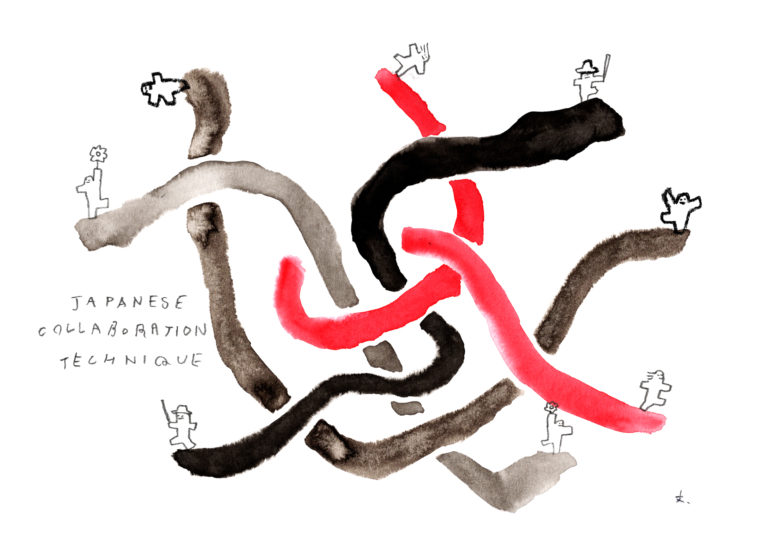Food for thought

NFTs – what’s all the fuss about these jpegs anyway?
In early February, a jpeg of a pixelated, pale, bandana-wearing alien sold for nearly $24 million dollars. Why? It is an NFT (non-fungible token) from a 10,000-strong collection of digital avatars called Crypto Punks, many of which are also priced in the millions. Each Punk has differing ‘unique’ attributes or traits, whose rarity affects the value: the alien trait, which appears only nine times, is the rarest and therefore the most expensive. To true believers, this alien represented a piece of crypto history and would thereby allow its owner to gain membership of an exclusive inner circle of NFT elite collectors.

Authenticity in the time of over-used celebrity ambassadors
Take a walk through the shopping districts and subways of Shanghai, and one face stands out.
An actor with over 4.6mn Twitter followers, Eddie Peng is plastered all over advertisements: from Adidas to Hugo Boss, from Vivo to the Yili dairy drink, from Shiseido’s male skincare range to Wrigley’s chewing gum, and from Longines watches to Bluemoon anti-bacterial handwash.
His ubiquity as a brand ambassador is seemingly endless.

The Japanese art of collaboration
Japanese consumers are particularly fastidious. They are highly self-conscious about what any given consumption choice tells others about themselves. They identify themselves as part of certain lifestyle tribes or kei (系) from which it is possible to guess at their preferred colour codes, brands and styles; and from there what and whom they are likely to be reading, listening to and following.

Does investing in China’s over-endorsed variety and talent shows really benefit brands?
It was more than ten years ago when talent shows first arrived on TV in China.
The new entertainment format was immediately identified by the country’s corporate sector as a perfect vehicle for raising brand awareness and boosting sales.

The Paradox of the Inner Man
In the previous article, we have seen that it is women who have driven appreciation of a new androgynous aesthetic. As a result, intensive grooming and beautification are now the norm for countless younger men. They feel free to express themselves outwardly in a way that generations before them would never dare. It is an evolution in masculinity that is far beyond anything in the West: Chinese men in the largest cities can, without fear of any judgement, openly buy and wear make-up in public.

Masculinity in Japan: Beyond the Singularity
Going, going, not quite gone: the “man’s man”
Showa Man is the embodiment of residual masculinity. He personifies the Showa era of high growth where company life and hard work was everything: the fiercely loyal, hard-working, cigarette-smoking, whiskey-drinking, golf-playing, hostess bar-frequenting, monosyllabic personification of a man’s man. As a modern incarnation, this mixture of the Marlboro cowboy, Samurai legacy and physical prowess is now fairly niche, and largely confined to older generations. The image has even sunk enough in repute to be occasionally equated with an oyaji or ossan: a cantankerous, grumpy old man.
Nevertheless, residual does not mean dead, and many products and services still cater to those who identify with its tropes.

Shifting Sands: Masculinity in China
In February 2021, China’s Education Ministry issued a notice that called on schools to reform their physical education lessons. The aim? To make boys more traditionally ‘manly’. This immediately generated huge controversy, colliding with the belief of young Chinese people in particular that a man should be allowed to display ‘characteristic, simple human emotions.’ To this cohort, to be timid or gentle is not to deny one’s manliness. Many public discussions ensued, within which we can see clear shifts in views on masculinity in China.

Japan: can it recognise strength in diversity?
Every nation has an identity, a narrative that it tells itself about its history, the character of its people, its preferences. Japan relies on an idealised collective imagination perhaps more than most, given its history of isolation and today’s continued resistance to any major influx of immigrants. This lack of any major influence from the ‘other’ has left aspects of Japan’s culture consequently preserved in aspic, despite the fabled modernity of much of its industry.

The Cool Factor for Japanese youth
To the very young, earlier generations’ lives must seem redolent of ancient history; and hearing too many details of pre-meme days either engenders a horrified shudder or absolute boredom. This is of course matched by their parents’ utter mystification at how they spend their time. For the corporates trying to reach these consumers, however, the messaging service LINE’s regular surveys on the ‘hottest’ interests of Japan’s youth (15-24yo) offer valuable insights. And for much of 2020, both the girl band NiziU and the anime Demon Slayer (鬼滅の刃, Kimetsu no Yaiba) have dominated every ranking.

The death of young romance? Singletons and the brands they love.
It is natural, when contemplating the mysteries of youth culture, to think only about what is different, new or emerging. And Japan is of course home to a plethora of unusual sub-cultures that evoke fascination around the world. It can be just as interesting, however, to look at societal trends that remain stubbornly consistent within every rising generation, rather than being turned on their head by teenagers determined not to become their parents.
Browse by Favourites

Everyday Objects
In this series, we look at mundane objects from everyday life in Japan. Based on our first pop-up exhibition, and including many of your personal contributions, we use everyday artefacts as starting points to learn about cultural frameworks.

Yuzu Trend Tracker
Coming Soon

Yuzu & Market Research
In this series, we give our professional insight into the best ways to conduct market research in Japan and China, and the current status of these markets. If you’re thinking about entering or expanding your presence in East Asia, these articles are a must-read!

